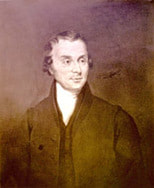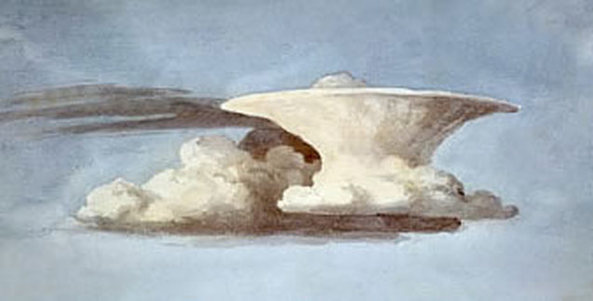  A long time ago in a land far, far away… The climate suddenly changes. It’s May, and a “Great Fog” appears in the sky. During the day it blocks out the sun and acts like a blanket trapping heat near the ground. A ten-year old boy notices that temperatures spike and sunsets are a spectacular display of colors. He doesn’t know that volcanoes in the “Ring of Fire” are spewing ash into the atmosphere creating massive clouds and causing the strange weather. All he knows is that he can’t take his eyes off the sky. The boy’s name is Luke Howard. The year is 1783, and his location is the English countryside. Luke records his observations in a journal. Although he doesn’t know it yet, he is on his way to becoming the “Father of Meteorology.” Flash forward twenty years. It’s 1803, and Luke Howard is a successful businessman. But in his spare time, ever since the summer of 1873, he’s been watching the clouds and thinking up new ideas about the weather. He writes and publishes a scientific paper and presents his ideas to a group of fellow amateur scientists. His article, “On the modification of clouds, and on the principles of their production, suspension and destruction,” classifies clouds into groups using Latin words: heaped (cumulus), layered (stratus), fibrous (cirrus), and rain (nimbus). By combining terms into names such as Cirro-cumulus, which he describes as "small, well-defined roundish masses, in close horizontal arrangement," Luke identifies many kinds of clouds. Luke’s passion for clouds inspires him to make watercolor sketches and write a book called The Climate of London, which introduces new ideas about lightening and the causes of rain. In 1864, Luke Howard dies at the age of ninety-two, leaving behind a cloud naming system that is still used today. A long time ago in a land far, far away, Luke Howard names the clouds—and in our imagination we see him turning to a friend and saying, “May the clouds be with you.”  Spidermania: Friends on the Web debunks myths about spiders and takes an extremely close look at creatures that have both fascinated and terrified humans. An introduction explains what makes spiders unique. Then ten species are highlighted with incredible electron micro-graph images and surprising facts. From diving bell spiders that live in bubbles underwater, to spitting spiders that shoot sticky streams of spit at their prey, to black widows and wolf spiders, this unusual book will intrigue readers and help cure arachnophobia. For more information, click here.
0 Comments
Leave a Reply. |
Traffic for our summer Minutes are ticking up.. |






 RSS Feed
RSS Feed
